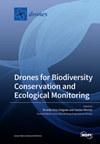Integrating a UAV System Based on Pixhawk with a Laser Methane Mini Detector to Study Methane Emissions
IF 4.4
2区 地球科学
Q1 REMOTE SENSING
引用次数: 0
Abstract
This article describes the process of integrating one of the most commonly used laser methane detectors, the Laser Methane mini (LMm), and a multi-rotor unmanned aerial vehicle (UAV) based on the Pixhawk flight controller to create an unmanned aerial system designed to detect methane leakages from the air. The integration is performed via the LaserHub+, a newly developed device which receives data from the laser methane detector, decodes it and transmits it to the flight controller with the protocol used by the ArduPilot platform for laser rangefinders. The user receives a single data array from the UAV flight controller that contains both the values of the methane concentrations measured by the detector, and the co-ordinates of the corresponding measurement points in three-dimensional space. The transmission of data from the UAV is carried out in real time. It is shown in this project that the proposed technical solution (the LaserHub+) has clear advantages over not only similar serial commercial solutions (e.g., the SkyHub complex by SPH Engineering) but also experimental developments described in the scientific literature. The main reason is that LaserHub+ does not require a deep customization of the methane detector or the placement of additional complex devices on board the UAV. Tests using it were carried out in aerial gas surveys of a number of municipal solid waste disposal sites in Russia. The device has a low cost and is easy for the end user to assemble, connect to the UAV and set up. The authors believe that LaserHub+ can be recommended as a mass solution for aerial surveys of methane sources. Information is provided on the approval of LaserHub+ for aerial gas surveys of a number of Russian municipal waste disposal facilities.基于Pixhawk的无人机系统与激光甲烷微型探测器集成研究甲烷排放
本文描述了集成最常用的激光甲烷探测器之一,激光甲烷迷你(LMm)和基于Pixhawk飞行控制器的多旋翼无人机(UAV)的过程,以创建一个旨在检测空气中甲烷泄漏的无人机系统。集成是通过LaserHub+完成的,LaserHub+是一种新开发的设备,它可以接收来自激光甲烷探测器的数据,对其进行解码,并使用ArduPilot激光测距仪平台使用的协议将其传输到飞行控制器。用户从UAV飞行控制器接收一个单一数据阵列,其中包含探测器测量的甲烷浓度值和三维空间中相应测量点的坐标。无人机的数据传输是实时进行的。在这个项目中表明,拟议的技术解决方案(LaserHub+)不仅比类似的系列商业解决方案(例如,SPH工程公司的SkyHub综合体)具有明显的优势,而且比科学文献中描述的实验发展也有明显的优势。主要原因是LaserHub+不需要对甲烷探测器进行深度定制,也不需要在无人机上放置额外的复杂设备。在俄罗斯一些城市固体废物处理场的空中气体调查中进行了使用它的试验。该设备成本低,易于最终用户组装,连接到无人机和设置。作者认为,LaserHub+可以作为一种大规模的解决方案推荐用于甲烷源的空中调查。提供了关于批准LaserHub+对若干俄罗斯城市废物处理设施进行空中气体调查的资料。
本文章由计算机程序翻译,如有差异,请以英文原文为准。
求助全文
约1分钟内获得全文
求助全文

 求助内容:
求助内容: 应助结果提醒方式:
应助结果提醒方式:


